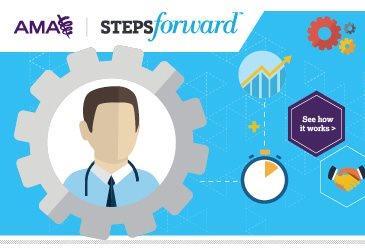Your team may find clear communication and care coordination difficult in a busy practice environment. Find out how a single 10-15 minute addition to the daily schedule helped two physician practices improve team culture, relationships and collaboration to deliver stronger patient care.
A simple idea to solve complex issues
A practice must be able to coordinate efforts among team members. That’s why Martin’s Point Healthcare in Bangor, Maine, began informal touch-base sessions, which started as quick conversations between a single clinician and his clinical support team to improve communication. Just 10 years later, those sessions have evolved into a 10-15 minute high-energy “huddle” at the beginning of each day, during which the practice team discusses the day’s plan.
These huddles define “what we are doing today and how that is moving us closer to our goals,” said practice administrator Paula Eaton. “Every day is an opportunity to make improvements.”
The huddle model at Martin’s Point Healthcare has met challenges over its decade-long lifespan. As a solution to several of these challenges, a meeting facilitator role was created to keep huddles on track by tabling and recording issues that needed longer discussions to be held in the already established team meetings. “Huddles are not really meetings,” Eaton said. “The team makes the plan, then off we go.”
The AMA’s STEPS Forward™ collection can show you how to use brief daily huddles in your practice by establishing the routine, developing relationships and designating roles that help your team anticipate patient needs and prepare for changes so the day runs more smoothly.
Keeping your plan on track throughout the day
A morning huddle can set the schedule for the rest of the day, but in every practice, situations can change in an instant. Clinica Family Health in Denver, Colo., has found that adding a touch-base after lunch helps their practice team come together a second time to coordinate efforts around any problems that arise and throw off the daily plan.
Clinica also uses a portion of this time to reinforce data-driven quality improvement efforts. Team members gather at the data board to review performance data and discuss plans of attack for lagging indicators. Under this model, the entire team takes on responsibility for patient health, and Clinca has seen significant improvements in team culture and performance.
“When the team comes together to plan care on a regular basis,” said Karen Funk, MD, vice president of clinical services and a practicing family physician at Clinica, “we become more high-functioning and efficient and accomplish so much more with our patients.”
How can your practice improve coordination?
The AMA’s STEPS Forward collection offers several modules to enhance your practice team. Learn ways to focus on strengthening your practice’s team culture, address electronic health record woes with team documentation or streamline office visits while improving care.
More than 25 modules are available in the AMA’s STEPS Forward collection, and several more will be added later this year, thanks to a grant from and collaboration with the Transforming Clinical Practices Initiative.




